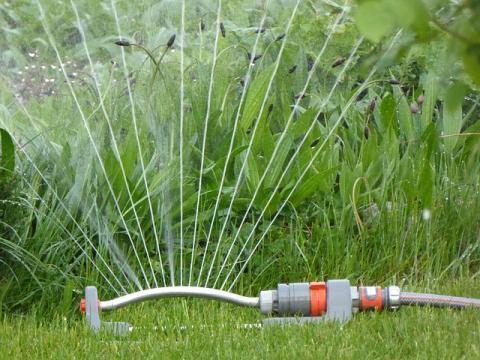
Since the 1950’s, lawns have become engrained in American tradition – a rolling lawn is about as American as the white picket fence it sits behind. But lawns can actually be quite taxing on the environment – from pollution to dissolution of habitats for wildlife. This article will explore the ramifications of lawns and the care they require – and how to mitigate the effects while still enjoying your lawn.
Lawns in general are working against the environment in terms of habitats and pollution:
Habitats: Lawns provide little-to-no habitat for insects, birds, or other wildlife. There is significantly less shelter and food on a lawn, and the chemicals used to maintain the lawns drive away or poison potential nesters. Insects are the unsung heroes of many environmental functions – from pollinating flowers and vegetables, to providing an organic pest management system, to creating your own little ecosystem in your backyard. But, since the 1950’s there has been a massive influx of lawn care (both of the DIY and commercial services variety). Manicured lawns actually do a number on the population of these critters.
Maintenance: The issue of maintaining a lawn is one of the most pressing reasons to replant your yard to make it a habitat for wildlife. Lawn maintenance is stressful on the environment for three main reasons:
- Water: watering lawns uses massive amounts of water daily. What’s more is how many people over-water – how many times have you been out in your neighborhood and noticed the sprinklers are spraying into the streets only to run off into the storm drains. A lot of water is used, and a lot of water is wasted. Global temperatures are consistently rising and droughts all over the country are becoming more commonplace. In fact, if everyone with a lawn watered properly, about 200 gallons per lawn per day of drinking water would be used.
- Lawn maintenance equipment: the equipment used to care for lawns pollutes the air. Lawnmowers and weed whackers use gasoline to operate – and are accordingly responsible for about 5% of all air pollution in the United States, according to the Environmental Protection Agency (EPA).
- Pesticides & Fertilizers: these chemical components of lawn care pollute the surrounding environment by both toxic air emissions and runoff into water sources. Moreover, pesticides are incredibly harmful to helpful insects and pollinators like honeybees and birds.
There’s a lot you can do to mitigate the effects of your lawn care as well.
- Purchase green lawn equipment – this is becoming more accessible and popular!
- Minimize lawn space to high traffic areas
- Purchase sprinklers that save water
- Make sure any automatic sprinklers are installed in locations that eliminate watering outside of your targeted area (like the street).
Do you have any other tips and tricks to mitigate the effects of lawn care? Share below!
Ready to turn your yard into a home for pollinators? Find out how here.
